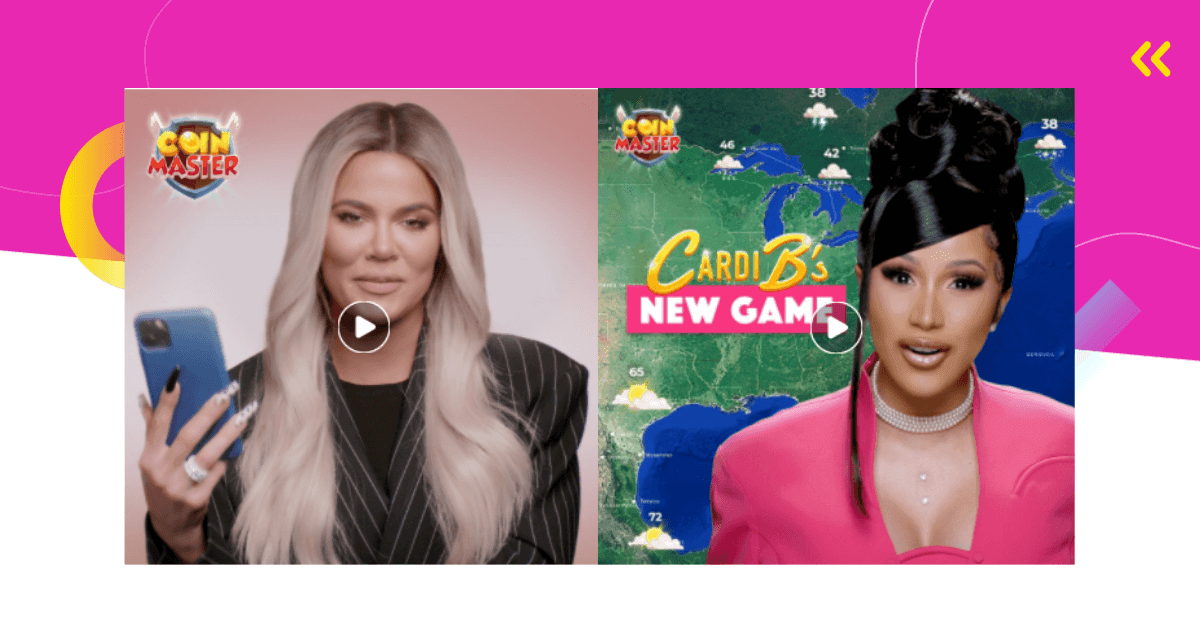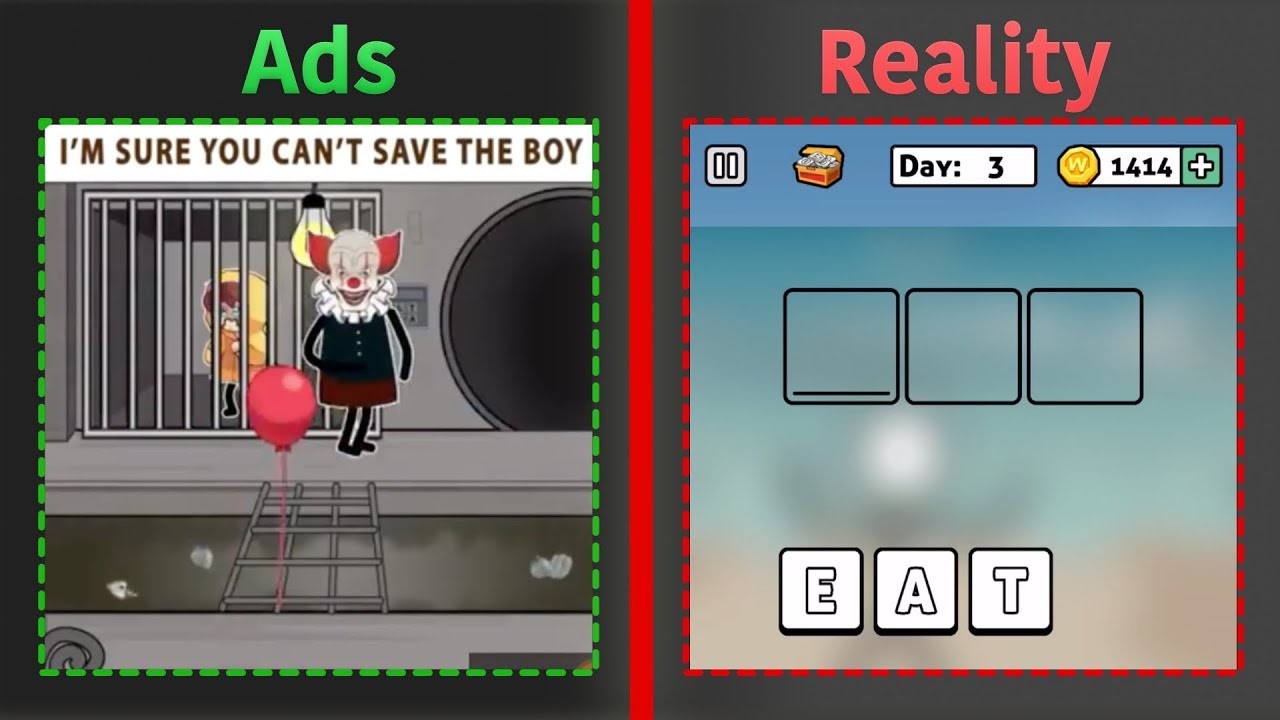User-generated content (UGC) is currently the hottest trend in mobile game marketing. While it’s making waves, the surprising reality is that these types of advertisements remain underutilized by many game studios. Many in the industry haven’t yet tapped into the full potential of UGC game ads – either because they’re unaware of its advantages or because they’re unsure how to implement it effectively.
But don’t worry, you’re in the right place.
This article aims to be the most comprehensive guide on user-generated content for advertising mobile games. Whether you’re just starting to explore this advertising trend or looking to refine your existing strategies, we’ve got you covered with insights you won’t find elsewhere.
What Is User-Generated Content in Mobile Game Advertising
You might know user-generated content as photos, videos, or reviews typically shared by users on social media. While that definition still holds, UGC has matured into a potent paid advertising mechanism – especially for those in the mobile gaming industry.
Here, UGC is more specialized.
It’s not just any content; it’s paid content, explicitly crafted to acquire users for a game. This usually involves paying a content creator to make a video about a game – be it a review, a gameplay run, or even a sketch. These videos are then deployed in paid advertising campaigns.
Content creators, in this setup, act as real players – even though they’re paid for their efforts. This adds a layer of authenticity to the advertising that traditional ads often lack.
Examples of UGC Ad Creatives for Mobile Games
Let’s examine some examples to get a better idea of how UGC ads look and how they’re used in mobile gaming.
1. Monopoly GO
Monopoly GO by Scopely is making waves in the mobile gaming market. Not only has it ascended the ranks to become a top-grossing game, but its user acquisition strategies are also worth noting. Among these, Scopely makes effective use of user-generated content in its advertising campaigns.
In one of their UGC ads, the video screen is neatly divided into two halves. On the left, you see a Millennial man, who acts as the player. On the right, you’re shown game-related footage. Throughout the video, the man discusses his experience with the game, all of which is conveniently captioned with subtitles.
The core message that the player conveys is simple but impactful – If you’ve enjoyed the classic Monopoly board game, you’re going to love Monopoly GO. He elaborates on this by highlighting the main features that make the game fun and engaging.
2. Royal Match
Royal Match, another game that has claimed its spot as a top-grosser, also employs user-generated content in its marketing campaigns. In one of their UGC ads, a younger man takes center stage. He starts off by saying how thrilled he was to finally find a game with no intrusive ads, which captures immediate attention.
As the video rolls, he proceeds to play Royal Match – focusing on the game’s mini games rather than the core match-3 gameplay. This is an interesting combo of the mini-game ad trend and UGC, aimed to appeal to a broader audience.
Wrapping up the ad, there’s a call-to-action inviting viewers to download Royal Match and join the fun. One of the major strengths of this ad is its authentic feel, which not only makes it more relatable but also increases its impact.
3. Toon Blast
Toon Blast takes a slightly different approach by often collaborating with well-known personalities for their ads. One such UGC ad features Justin Guarini – an American singer, songwriter, and actor. In a straightforward, minimally-produced video, he talks about how he stumbled upon Toon Blast and decided to give it a go.
This particular ad has the vibe of a casual Cameo-style video. It creates the impression that celebrities and public figures are enjoying the game, just like other players. It adds an extra layer of allure and makes viewers think, “If it’s good enough for them, why not try it myself?”
4. Dragon City
Dragon City also jumps on the UGC bandwagon with an ad featuring a young woman. In the video, she’s shown creating and customizing her own dragon. This cleverly spotlights the game’s customization features, inviting potential players to imagine the possibilities.
However, the ad includes a disclaimer stating that what’s being shown is not actual gameplay footage. Despite this, the woman is very relatable and the video has an authentic feel, which adds a layer of social proof.
5. May Talking Angela 2
My Talking Angela 2 employs UGC in its marketing strategy with an ad that features a young woman, mirroring the game’s target audience.
Shot in a bedroom setting, the video captures the intimate, home-footage look that’s quintessential for UGC ads.
Throughout the video, she’s seen playing the game and interacting with the game’s character, Angela. A special focus is placed on the game’s customization and dress-up features, enticing potential players with the array of personalization options available.

Why Is User-Generated Content Effective for Advertising Mobile Games?
Understanding why user-generated content resonates so well in mobile game advertising is crucial for getting the most out of your campaigns. Here’s a breakdown of the key factors that make UGC a compelling choice.
Enhanced Authenticity and Trust
First and foremost, user-generated content comes across as more authentic compared to brand-generated material. When potential players see content featuring real gamers enjoying the game, it creates a level of trust that traditional advertising often can’t match.
Even though the creators are paid, their role as players gives the content a realness that resonates with audiences.
Social Proof
The psychology of social proof tells us that people are heavily influenced by others. In the context of mobile games, user-generated content serves as a powerful testament to a game’s quality or fun factor. When potential players see others enjoying a game, they’re more likely to download and try it out for themselves.
Cost-Efficiency
User-generated content often offers better bang for your buck.
Not only are UGC ads generally less expensive to produce, but they can also result in a lower cost-per-acquisition. This dual benefit often translates into a higher ROI, making UGC a financially smart choice for your advertising strategy.
Higher Click-Through Rates (CTR) and Engagement
Data from AppSamurai indicates that UGC-based ads garner four times higher click-through rates and a 50% drop in cost-per-click.
Additionally, blending user-generated content with professional content has been shown to increase engagement by up to 28%.
Viral Potential
Finally, user-generated content carries a strong potential to go viral – a tremendous advantage when it comes to acquiring new players. A single piece of content that gains momentum can skyrocket a game’s visibility, especially on social media platforms, compelling more players to give it a go.

Promoting a Mobile Game with User-Generated Content: A Step-By-Step Guide
So, you’re convinced that user-generated content is the way to go for your mobile game advertising.
Now comes the execution part.
To get you started, here’s a straightforward 5-step guide.
1. Come Up with Engaging Ad Concepts and Write a Script
The first and crucial step in your journey is to brainstorm engaging ideas for your ads. When it comes to user-generated content, the actual content is the most important element and should be the cornerstone of your ad campaign.
You have a wide range of content styles to choose from, but typically, two types stand out as most effective: those that involve testimonials or reviews, and those that employ humor through funny sketches.
If you wish to have complete control over how the videos turn out, creating a detailed script for the content creator to follow is the best approach.
Alternatively, you can also give the content creator the freedom to bring their own creative ideas into the project. In such cases, it’s important to clearly communicate the goals you wish to accomplish through the ad.

2. Identify and Hire the Right Creators
With your ad idea and script in hand, the next step is to find the perfect content creators to bring your vision to life. The best fit will depend largely on the specifics of your mobile game, like its genre and target demographic.
Let’s say you’re promoting a match-3 puzzle game.
Research shows that the main players for this genre are often women over 30 who engage in casual gaming. In such a case, it makes sense to hire a content creator who mirrors this demographic. Doing so adds an extra layer of relatability and trust, making the advertisement more compelling to potential players.
If speed is of the essence and you�’re looking for a one-stop solution, platforms like Influee and Billo are excellent choices. They offer both a range of creators and user-generated content specifically tailored for mobile game advertising.
For those interested in tapping into the star power of well-known creators, influencers, or even celebrities, Cameo provides a streamlined way to acquire custom user-generated content without breaking the bank – though prices can vary based on the creator’s popularity.

3. Edit the User-Generated Content
Once you’ve secured a collaboration with a content creator, it’s vital to be thorough in requesting all the types of footage you might need for the final ad.
For instance, if you’re focusing on classic user-generated ads that are rooted in testimonials or reviews, make sure to ask for two things: footage of the creator speaking directly to the camera about your game, and supplemental b-roll footage.
Having a rich variety of footage at your disposal allows you the flexibility to edit your ads in numerous ways, i.e., create different variations of an ad. That can be particularly advantageous when you’re running tests to see what resonates most with your audience.
While piecing together your user-generated content, don’t hesitate to integrate other elements such as gameplay footage.
This can work well when the content creator is talking about specific features or experiences in the game. Additional assets like logos and calls to action can also be incorporated to make the video ad more comprehensive and action-oriented.
4. Run UGC Advertising Campaigns on Multiple Platforms
Now that your user-generated content video ad is polished and ready to go, it’s time to distribute it across a variety of ad networks.
The specific networks you opt for will depend on your particular objectives and the genre of your game. For tailored advice, I recommend checking out our summary of AppsFlyer research on the top ad networks for player acquisition.
It’s crucial to begin with a testing phase.
This is where the multiple versions of your ad come into play. Run these different variations to gauge performance metrics and identify which one yields the best results. This data-driven approach can offer invaluable insights and help you refine your campaign for maximum impact.
5. Iterate Based on Insights
After you’ve run your initial tests on various ad variations, you’ll begin to collect valuable data that takes the guesswork out of what’s effective and what isn’t. The importance of this phase cannot be overstated; it’s not merely about observing surface-level results, but digging deep into essential metrics that can inform your next moves.
The next step is to iterate your ads based on these insights. By doing so, you can further refine your advertising efforts to meet specific objectives. The endgame here is straightforward yet critical: to minimize player acquisition costs while maximizing key metrics such as ROI and ROAS.
User-Generated Content: A Summary
In the fast-changing world of mobile games, user-generated content is an excellent asset for advertising. This article has provided you with insights on its effectiveness, a step-by-step guide to crafting your own UGC campaigns, and real-world examples from top-grossing games.
If you’re looking to boost your mobile game’s user base, implementing UGC in your advertising strategy could make a significant impact. Feel free to reach out to us; we have extensive experience in creating successful UGC ads for mobile games. We would love to help you achieve your goals.







Comments